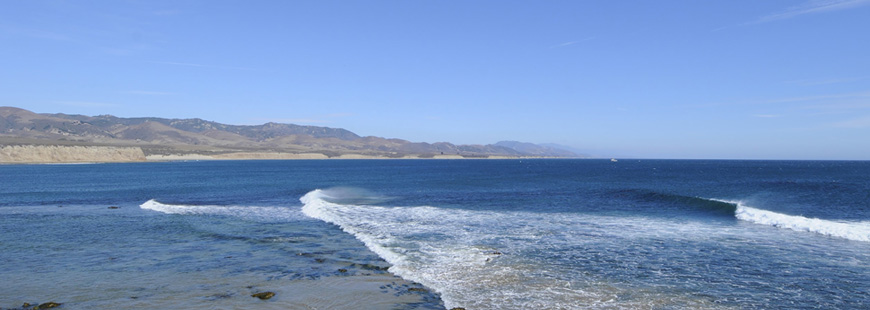Top photo: View of Cojo Anchorage in the proposed Chumash Heritage National Marine Sanctuary. (Image credit: Robert Schwemmer/NOAA)
On September 6, the National Oceanic and Atmospheric Administration (NOAA) released the final environmental impact statement (EIS), outlining the environmental impacts of the proposed Chumash Heritage National Marine Sanctuary. The final EIS is an important and necessary step toward a final agency decision expected in October 2024.
NOAA’s preferred alternative encompasses the coastline and waters offshore San Luis Obispo and northern Santa Barbara counties of California, and includes the Santa Lucia Bank, its escarpment, Rodriguez Seamount, Arguello Canyon, and other offshore features and resources to approximately 78 miles offshore.
Joel R. Johnson, president and CEO of the National Marine Sanctuary Foundation, said about the progress of the proposed sanctuary:
The designation of Chumash Heritage National Marine Sanctuary is a transformational moment for our coastal California waters and all stewards of our shared ocean. Truly, the first Indigenous-nominated sanctuary is an historic achievement for our country, benefiting the natural wonders of these waters as well as the people and communities that are at the heart of its story,” said Joel R. Johnson, president and CEO of the National Marine Sanctuary Foundation.
The designation of Chumash Heritage National Marine Sanctuary advances ocean justice and equity by protecting ancestral waters and upholding the Central Coast Tribes’ traditional knowledge and ways of stewarding cultural and marine resources.
The diversity of America’s network of marine protected areas is strengthened with this designation, and it closes a biodiversity protection gap along the California coast. Blue whales, leatherback sea turtles, black abalone and southern sea otters are just a few of the species gaining new habitat protection. People will benefit from access to recreational activities like fishing and surfing. The communities who steward the sanctuary will benefit from new opportunities for public-private partnership. Indigenous collaboration in its management will secure cultural practices for generations to come.
National marine sanctuaries provide important cultural benefits to coastal communities. The sanctuary’s proposed management plan and Indigenous collaborative co-stewardship framework reflect the intent of NOAA to ensure and facilitate participation of multiple Indigenous communities through several advisory panels and council positions.
“Every tribal nation across the country maintains a significant cultural tie to its aboriginal lands and waters. Sadly, for many, those connections have been difficult to reach. But today, with this announcement, the Chumash people take great strides in restoring our connection to our maritime history,” said Kenneth Kahn, chairman of the Santa Ynez Band of Chumash Indians, who will serve as a co-steward of the sanctuary.
“Throughout the EIS process, NOAA worked diligently to ensure the Chumash people’s cultural heritage is preserved and protected,” said House Natural Resources Committee Ranking Member Raúl M. Grijalva (D-Ariz.). “The Chumash Heritage National Marine Sanctuary will safeguard one of the most biologically diverse and culturally significant marine areas in the country, and it will do so with the guidance and leadership of the Chumash people.”
The proposed Chumash Heritage National Marine Sanctuary would manage, interpret, and protect Central California coast’s nationally significant underwater cultural and natural resources and history.
Special geologic features like Rodriguez Seamount create unique ecological conditions in the area. The area is an important biogeographic transition zone with upwellings that supports large populations of marine life and boosts both biodiversity and productivity.
Over 200 documented shipwrecks, including the Gold Rush era steamship Yankee Blade and U.S. Coast Guard Cutter McCulloch, are listed on the National Register of Historic Places and would be included in the proposed sanctuary.
You can read the final EIS Volume 1 and Volume 2. The Network will continue to follow and provide updates on the progress of the proposed Chumash Heritage National Marine Sanctuary.


